- All
- Product Name
- Product Keyword
- Product Model
- Product Summary
- Product Description
- Multi Field Search
Email: sales@xelitepower.com
 English
English English
EnglishAuthor: Emily Zhou Publish Time: 09-22-2025 Origin: Site










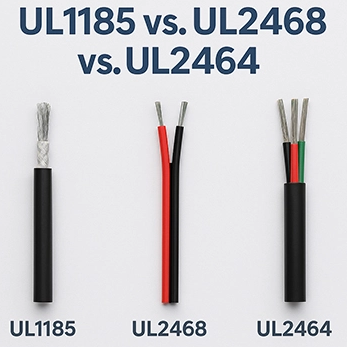
When it comes to electronics and electrical engineering, wires may not look impressive, but they are the essential “blood vessels” of every device and system. They deliver power, carry signals, and ensure safe operation. Choosing the right type of wire can make the difference between a reliable product and one that suffers from interference, overheating, or even safety hazards.
Among the wide range of UL-certified wires, UL1185, UL2468, and UL2464 are three that engineers, designers, and purchasing managers encounter most often. At first glance, their names differ only by a few numbers, but each has its own structure, performance characteristics, and application areas. In this article, we’ll explore these three wire types in depth, highlight their differences, and share practical tips on when to use each one.
UL (Underwriters Laboratories) is one of the most recognized safety certification organizations in the world. Founded in 1894 in Illinois, UL has established thousands of safety standards across electronics, electrical, chemical, and mechanical industries.
For wires, UL certification confirms that the product meets strict requirements for insulation, flame resistance, voltage rating, and temperature endurance. A UL mark on a cable is more than just a label—it is an assurance of safety, quality, and compliance.
Safety: Non-certified wires are more likely to overheat, short-circuit, or cause fire risks.
Global Market Access: Many countries require UL or equivalent certifications before allowing electrical products to be imported.
Reliability: UL-certified wires are tested under rigorous conditions, ensuring consistent performance over years of use.
Put simply: if you are designing or sourcing electrical products for global markets, UL-certified wires are the industry standard.
UL1185 is a shielded wire, most commonly used where stable and interference-free signal transmission is critical.
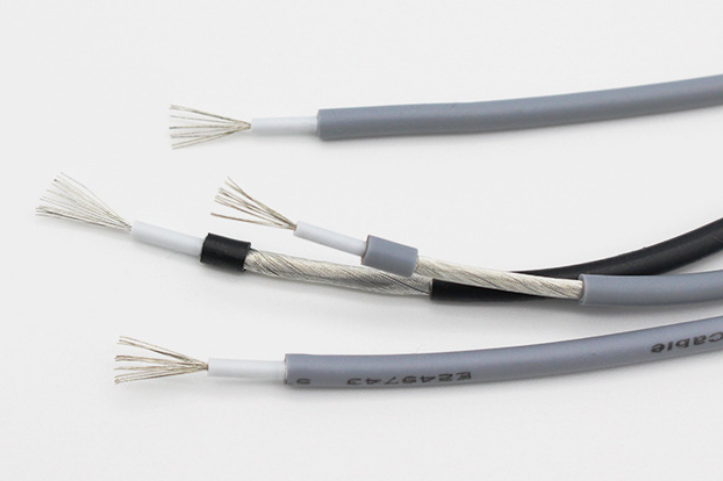
Conductor: Single or multiple cores.
Shield: Typically aluminum foil combined with a braided shield to block electromagnetic interference (EMI).
Jacket: Usually black PVC for insulation, flame resistance, and mechanical protection.
Excellent anti-interference performance, making it ideal for data or audio/video signals.
Designed for environments with high electrical noise.
Voltage rating: 300V; Temperature rating: 80–105°C.
Instrumentation and measurement systems
Industrial sensors and controllers
Audio and video equipment
For example, in a factory automation line, dozens of sensors send feedback signals to the central controller. If those signals are interrupted or distorted by surrounding electrical noise, the entire production could be disrupted. Using a shielded cable like UL1185 ensures the signals stay accurate and reliable.
UL1185 tends to be less flexible because of its shielding and thicker jacket. Processing—such as stripping or crimping—can also take more time, and the cost is higher compared to simpler cables.
UL2468 is one of the most common wires you’ll see in consumer electronics. It’s a flat ribbon-style cable and widely used for low-voltage power connections.
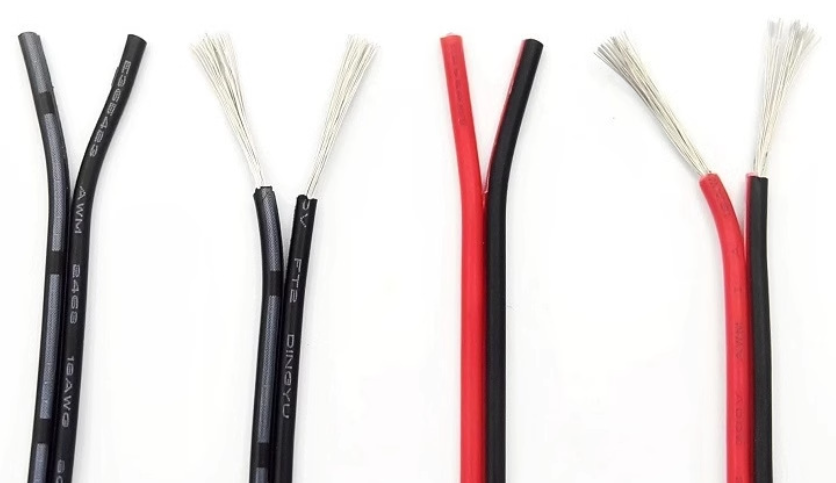
Two or more conductors laid side by side in a flat configuration.
Insulation: PVC, which provides flexibility and ease of processing.
Very flexible and easy to bend around corners or fit into compact spaces.
Simple to process—easy to cut, strip, and solder.
Cost-effective for mass production.
Voltage rating: 300V; Temperature rating: 80°C.
LED strip lights (a typical use case where space is limited and flexibility is key)
Small appliances
Internal wiring for low-voltage power supplies
For instance, LED lighting manufacturers often choose UL2468 because it is flat, lightweight, and easy to install along narrow channels. Its red and black colors also make it simple to identify polarity during assembly.
UL2468 is not shielded, which means it has poor resistance to interference. It is not suitable for carrying sensitive signals.
UL2464 is classified as a multi-conductor control cable, often found in industrial equipment and computing systems.
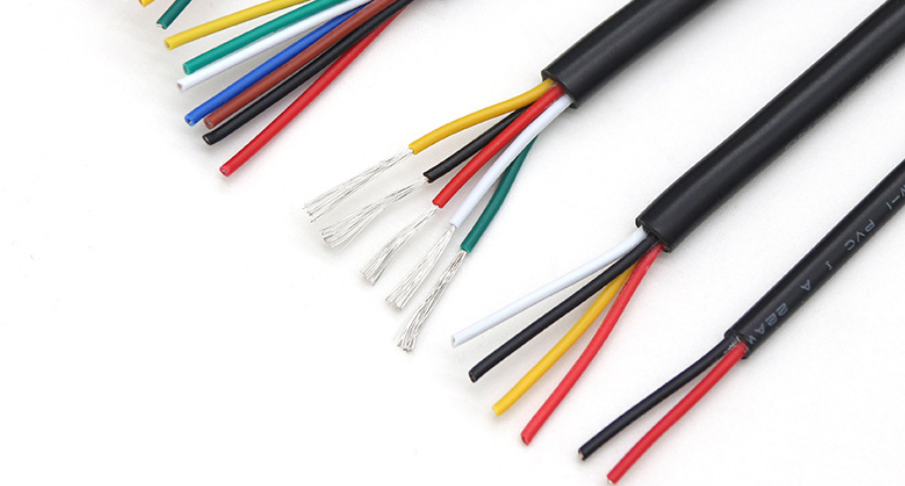
Multiple insulated conductors bundled into a round cable.
Outer PVC jacket for protection and flame resistance.
Available in both shielded and unshielded versions.
Can transmit both power and signals, making it versatile.
Shielded options provide resistance to EMI, suitable for demanding environments.
More durable than flat cables, designed for long-term use in equipment.
Voltage rating: 300V; Temperature rating: 80–105°C.
Industrial control panels
Computer peripherals and data systems
Cabinet and rack wiring
Imagine a CNC machine that requires dozens of control signals and power connections to motors, sensors, and controllers. Instead of running separate cables for each, UL2464 allows multiple cores to be bundled together in a neat, shielded jacket—reducing clutter and improving reliability.
UL2464 cables are generally thicker, less space-efficient, and more expensive than UL2468. They are typically used in professional or industrial settings rather than consumer products.
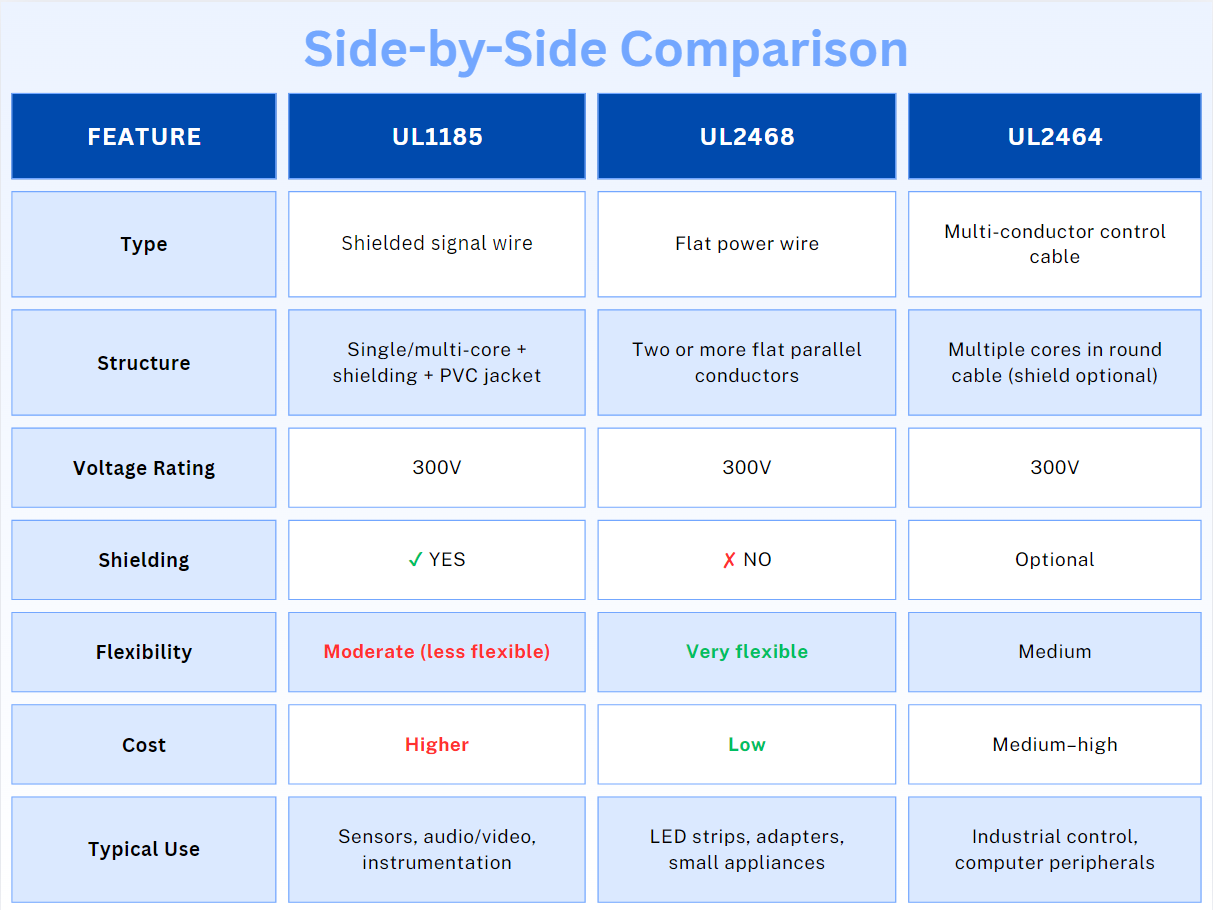
Based on function:
For signal transmission, especially in noisy environments → UL1185
For low-cost power wiring → UL2468
For multi-purpose industrial control → UL2464
Based on environment:
Strong EMI or noisy environment → UL1185 or shielded UL2464
Tight spaces or slim devices → UL2468
Based on budget:
Lowest cost → UL2468
Balance of versatility and performance → UL2464
High reliability and stability for signals → UL1185
While UL1185, UL2468, and UL2464 may look like small variations in a long list of wire types, they play very different roles in real-world applications.
UL1185 protects sensitive signals against interference.
UL2468 delivers an affordable, flexible solution for everyday power wiring.
UL2464 provides versatility and durability for complex control systems.
By understanding their differences and strengths, engineers and buyers can select the right cable for their needs, balancing performance, safety, and cost. In an industry where reliability is everything, making the right choice of wire is one of the simplest but most impactful decisions you can make.
At Xelite, we know that selecting the right wire is not just about meeting technical specifications—it’s about ensuring long-term reliability, compliance with safety standards, and cost efficiency for your business. With over 17 years of experience in the power supply industry, our team works closely with clients to evaluate application needs, recommend the most suitable wire types, and provide tailored solutions for different environments—whether it’s a shielded cable for sensitive signals, a cost-effective flat wire for power adapters, or a multi-conductor control cable for industrial systems.
By combining technical expertise with a customer-first approach, Xelite helps clients reduce risks, improve product performance, and gain confidence that their power supply solutions will stand the test of time.